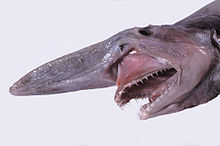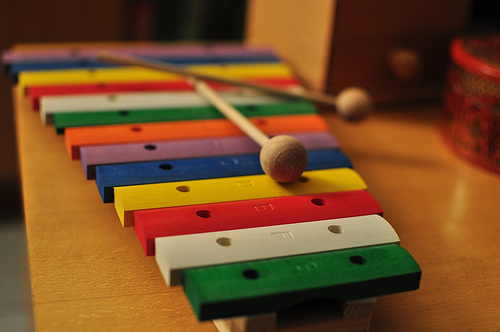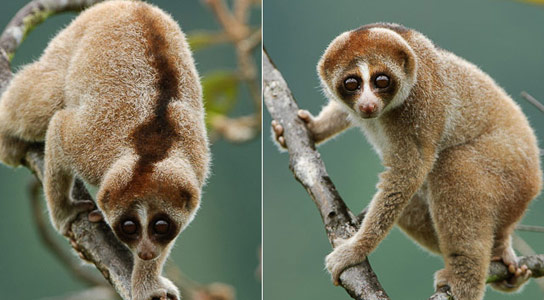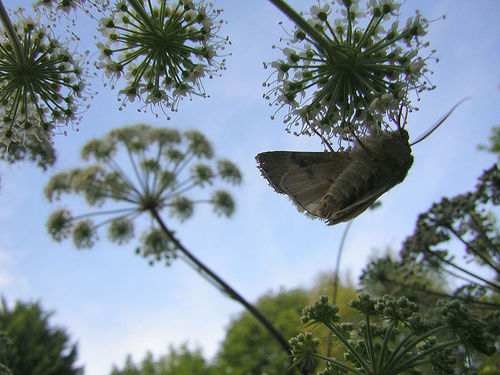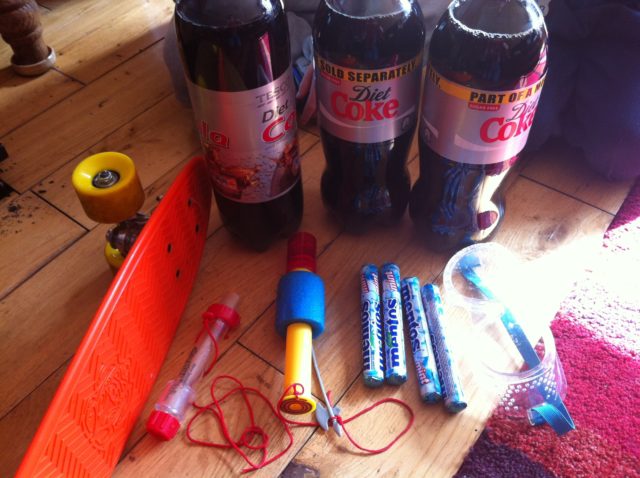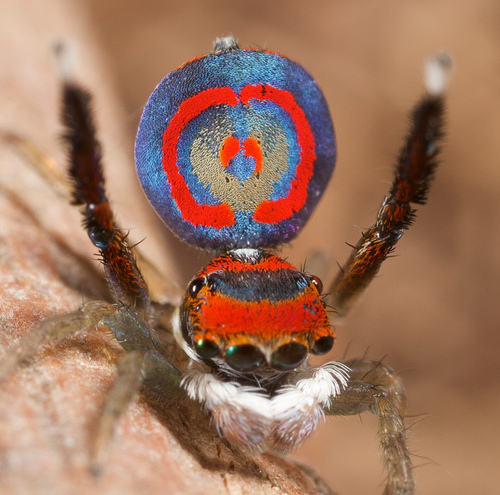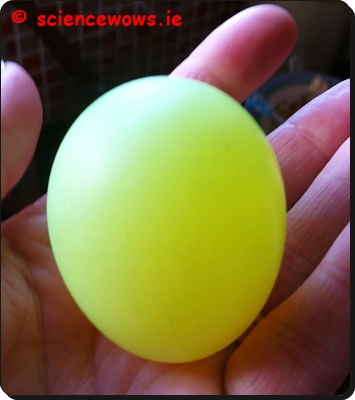It’s Friday so that can only mean one thing… another fun experiment to try, think you are going to like this one!
Nearly everyone seems to have heard of the classic “Coke & Mentos” experiment so we started with that…
You will need:
A 2 Litre bottle of coke (Diet coke is best as it doesn’t leave a sticky mess)
A packed of mentos mints
Basically you want to place the bottle of coke on the ground and add as many mentos to it at once as possible and then stand way back!!
How do you add the mentos?
- Well you could pop one or two in quickly and it will work fairly well.
- You could roll a piece of paper into a tube, sit it in the neck of the bottle and, gently pinch the base while you fill it with mentos (up to ten is about right) and then let then all slip into the bottle when you release the pinch at the base!
- There are devices specifically designed for delivering mentos into coke…. I bought this one from my local book shop…
-
 |
| With this you insert the pin, load up with mentos, screw the devise onto the top of your bottle of coke and then pull the pin to release the mints into the coke. There is even a little ring of plastic that drops down and covers the pin holes so all the coke goes upwards only. |
- You can make your own devise, like we did here (thanks Hubby)… does pretty much the same thing.
-
 |
| This is the one the I use for kids parties and events and it goes down a treat. I don’t bother plugging the holes at the side so the coke fountains out the side as well as the top and it all adds to the effect! |
This is what happens when you add the mentos to the coke…
Fun, isn’t it, but I thought we could shake it up a little (pardon the pun) … so I added two seven year olds home from school with a temperature and needing a bit of a distraction…
 |
| The “R & D” Department |
Then I gave them these… and asked them to come up with something fun!
 |
| The Props |
And this is what they came up with…..(That’s two teddies tied to the front of the skate board!!)…
What do you think? Not bad for two boys who had a temps of 38.5 an hour before….Oh the wonders of Calpol!
If you really want to scale things up you might get some inspiration from these guys (I love this video ;0) )…
“Coke and mentos powered car“.
So, do you want the bit of science behind the fun?...
Firstly, this is not thought to be a chemical reaction between the coke and the mentos. It is most likely a physical reaction known as nucleation; The coke is full of carbon dioxide gas, to give it it’s fizz; the mentos are full of tiny little craters on the surface of the sweet, the carbon dioxide gas is able to form bubbles in these “craters” producings thousands of tiny bubbles all at once; these bubbles of gas are under a lot of pressure within the bottle of coke and so come shooting out the mouth of the bottle. If anyone knows anything about Newton and his laws they will know that every reaction has an equal and opposite reaction (Newton’s third law of motion)… so the coke comes shooting out of the bottle in one direction and the force of this propels the skate board forward in the opposite direction. PRETTY COOL!
Now it’s your turn to go off and try it out, if you come up with any of your own ideas and experiments I’d love to hear about it!
….HAVE FUN!
